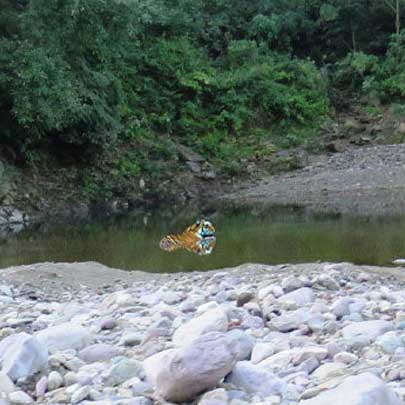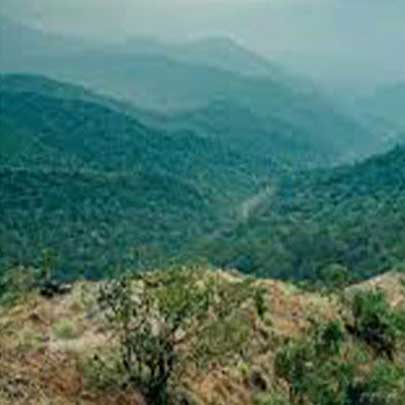The Breathtaking Canopy of Pilibhit Tiger Reserve: Nature’s Green Architecture
When we talk about forests, the conversation often begins with wildlife — the majestic tigers, playful monkeys, and the fluttering birds. But often overlooked is one of the most awe-inspiring parts of any forest: the canopy. At Pilibhit Tiger Reserve, located in the Terai region of Uttar Pradesh, the forest canopy is not just a shelter for animals — it is a living, breathing spectacle of natural beauty and ecological importance.
In this blog, we explore the beauty, biodiversity, and ecological role of the forest canopy in Pilibhit Tiger Reserve, while highlighting its significance for eco-tourism, wildlife conservation, and nature photography.
What Is a Forest Canopy?

A forest canopy refers to the upper layer of trees and vegetation that forms a roof over the forest floor. In Pilibhit Tiger Reserve, this canopy is largely made up of Sal trees (Shorea robusta), interspersed with bamboo, fig trees, climbers, and various other native species. This dense, green layer is not only a visual marvel but a crucial component of the forest’s biodiversity and climate regulation.
📖 Learn more about the native trees of Pilibhit
The Visual Beauty of Pilibhit’s Forest Canopy

Walking beneath the canopy of Pilibhit Tiger Reserve feels like stepping into another world. Sunlight filters softly through the overlapping leaves, casting patterns of light and shadow on the forest floor. In the early morning, the canopy glistens with dew, and as the day progresses, it provides cooling shade that contrasts with the heat outside the reserve.
The sheer height and density of the trees, some reaching up to 35-40 meters, create a cathedral-like effect, drawing the eyes upward and invoking a deep sense of wonder. For nature lovers and photographers, the canopy landscapes of Pilibhit are a dream come true — alive with movement, color, and sound.
📷 Explore nature photography in Pilibhit Tiger Reserve
The Canopy as a Biodiversity Hotspot

While the ground level teems with deer, tigers, and elephants, the canopy is a hidden world of arboreal life. It's home to numerous species of birds, mammals, insects, and reptiles, many of which rely exclusively on the upper layers of the forest.
Key Canopy-Dwelling Species in Pilibhit:
- Indian Giant Squirrel
- Langurs and Macaques
- Oriental Pied Hornbill
- Black-naped Oriole
- Indian Paradise Flycatcher
- Drongo Cuckoo
- Blue-tailed Bee-eater (especially between April and June)
During summer months (April to June), Pilibhit’s canopy becomes particularly vibrant as migratory birds arrive to breed and feed. The upper branches echo with bird calls, creating a living symphony under the forest sky.
🐦 See our guide to summer migratory birds in Pilibhit
Ecological Importance of the Forest Canopy
The canopy serves many vital ecological functions:
- Climate Regulation: By blocking direct sunlight and reducing wind, the canopy helps maintain a stable, cool microclimate below.
- Carbon Sequestration: Canopy trees absorb massive amounts of CO₂, helping fight climate change.
- Soil and Water Protection: The canopy reduces rainfall impact on the soil, preventing erosion and helping to maintain groundwater levels.
- Habitat Provision: The layered structure of the canopy creates niches for a wide variety of organisms.
- Pollination and Seed Dispersal: Many pollinators and fruit-eating birds live in the canopy, playing a role in forest regeneration.
These roles are vital to sustaining not only the tiger population that Pilibhit is famous for, but also the entire ecosystem that supports thousands of life forms.
🌱 Read more about ecological importance of forests
Pilibhit Tiger Reserve: A Sanctuary Beneath the Canopy

Declared a Tiger Reserve in 2008, Pilibhit forms part of the Terai Arc Landscape — one of India’s most important conservation regions. While it’s renowned for its healthy population of Royal Bengal Tigers, what truly sustains this apex predator is the rich, interconnected forest system — starting from the forest floor and rising up to the canopy.
The canopy supports prey species like deer by maintaining vegetation and water balance. In turn, these prey animals support predators like leopards and tigers. This makes the forest canopy of Pilibhit not just beautiful, but essential for life.
🐯 Explore tiger tracking in Pilibhit
Canopy Walks and Nature Trails: Tourism Under the Trees
Though canopy walkways are not yet developed in Pilibhit like in some other reserves, eco-tourism activities such as jungle safaris and birdwatching provide a close encounter with canopy life. Early morning safaris reveal monkeys jumping from branch to branch, birds singing from treetops, and slivers of golden sunlight piercing the foliage.
Eco-tourism in Pilibhit is growing, and the canopy experience is one of its key attractions. For those seeking serenity, silence, and raw natural beauty, the dense green cover offers a peaceful retreat away from urban life.
🧭 Plan your eco-tourism trip to Pilibhit
Preserving the Canopy: A Call for Conservation

The future of the canopy in Pilibhit Tiger Reserve depends on conscious conservation. Threats like illegal logging, encroachment, and climate change can rapidly degrade this delicate structure. Conservation efforts by the Forest Department, NGOs, and local communities have been instrumental in preserving the integrity of this ecosystem.
Public awareness and responsible tourism also play a big role. By visiting and supporting reserves like Pilibhit, people contribute to the protection of not just tigers, but also the canopy habitats that support hundreds of other species.
🌍 Support forest conservation in India
Conclusion: Nature’s Cathedral of Life
The canopy of Pilibhit Tiger Reserve is more than just a cover of leaves — it’s a dynamic, essential part of one of India’s richest forest ecosystems. From its visual beauty to its role in biodiversity conservation and climate regulation, the canopy offers an experience and a service that cannot be replicated.
As interest in sustainable travel and wildlife tourism grows, the forest canopy of Pilibhit stands out as a hidden gem — one that deserves to be seen, celebrated, and protected.












































































